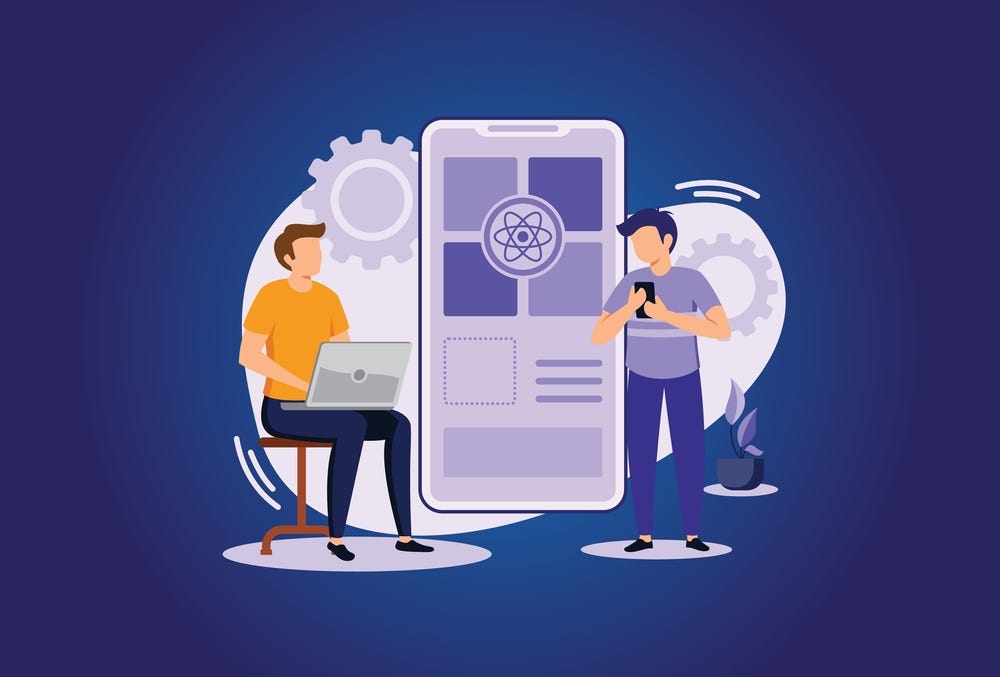
Introduction
Maintaining a React Native app isn’t a walk in the park. Imagine owning a car. You have to ensure it runs smoothly by performing regular oil changes, tire rotations, and occasional tune-ups. Similarly, a React Native app requires continuous attention to function efficiently and stay relevant in a fast-paced digital world. This article explores the challenges faced by a React Native app development company when maintaining apps and provides insights on how to tackle these issues effectively.
The Importance of App Maintenance
You wouldn’t neglect your car’s maintenance, right? The same principle applies to your React Native app. Regular maintenance ensures that your app stays up-to-date, secure, and performs well, offering users a seamless experience. Without it, you risk your app becoming obsolete or, worse, vulnerable to security threats. Let’s dive into the common challenges in React Native app maintenance and how to overcome them.
Common Challenges in React Native App Maintenance
1. Compatibility Issues
React Native apps need to be compatible with various platforms and devices. Over time, operating systems and devices get updates, which can lead to compatibility issues. These updates might cause your app to behave unpredictably or even crash. Ensuring compatibility requires constant monitoring and updates to align with the latest OS versions and device specifications.
2. Performance Optimization
Performance optimization is like fine-tuning your car’s engine. Your React Native app must run smoothly without lag. Performance issues can arise from inefficient code, memory leaks, or heavy resource usage. Regularly profiling and optimizing the app can help identify and fix performance bottlenecks, ensuring a better user experience.
3. Security Concerns
Security is paramount for any app. React Native apps are no exception. They can be vulnerable to various security threats, including data breaches and unauthorized access. Implementing robust security measures, such as data encryption, secure authentication methods, and regular security audits, is essential to protect user data and maintain trust.
4. Managing Updates and Upgrades
Keeping your app updated with the latest features and bug fixes is crucial. However, managing updates and upgrades can be challenging. Each new update or upgrade may introduce new bugs or require significant changes to the existing codebase. A systematic approach to version control and thorough testing before deployment can help manage this process effectively.
5. Debugging and Troubleshooting
Bugs are inevitable in software development. Debugging and troubleshooting are essential to ensure your app runs smoothly. However, identifying the root cause of issues can be time-consuming. Utilizing effective debugging tools and maintaining comprehensive logs can streamline the troubleshooting process, making it easier to pinpoint and fix problems.
6. Third-Party Library Dependencies
React Native apps often rely on third-party libraries for additional functionality. While these libraries can save development time, they can also introduce maintenance challenges. Outdated or deprecated libraries can cause compatibility issues or security vulnerabilities. Regularly reviewing and updating third-party dependencies is crucial to maintain the app’s stability and security.
7. Testing and Quality Assurance
Thorough testing and quality assurance (QA) are vital for app maintenance. Ensuring that your app works as expected across different devices and scenarios requires a comprehensive testing strategy. Automated testing can help streamline this process, but manual testing is also necessary to catch edge cases and ensure a polished user experience.
8. User Experience and Feedback
Listening to user feedback is like listening to your car’s engine for unusual sounds. User experience (UX) is a critical aspect of app maintenance. Gathering and analyzing user feedback can help identify pain points and areas for improvement. Regular updates based on user feedback can enhance the overall UX, keeping users satisfied and engaged.
9. Resource Management
Efficient resource management is essential for app performance. This includes managing memory, CPU usage, and network resources. Poor resource management can lead to slow performance, crashes, and a negative user experience. Regularly profiling the app and optimizing resource usage can help maintain smooth performance.
10. Keeping Up with Industry Trends
The tech industry is constantly evolving. Staying updated with the latest trends and best practices in React Native development is essential for maintaining your app. This includes following updates from the React Native community, attending conferences, and participating in online forums. Staying informed can help you anticipate changes and adapt your app accordingly.
Conclusion
Maintaining a React Native app is like taking care of a beloved car. It requires regular attention, timely updates, and constant monitoring to ensure it runs smoothly and stays relevant. By understanding and addressing the common challenges in app maintenance, a React Native app development company can ensure their apps provide a seamless and secure user experience.
FAQs
1. What are the most common compatibility issues in React Native apps?
Compatibility issues often arise due to updates in operating systems and devices. Regular testing and updates can help mitigate these issues.
2. How can I optimize the performance of my React Native app?
Performance optimization involves profiling the app, identifying bottlenecks, and optimizing code. Regular updates and efficient resource management are also crucial.
3. What are the essential security measures for React Native apps?
Implementing data encryption, secure authentication methods, and regular security audits are essential to protect user data and maintain app security.
4. How do I manage updates and upgrades in React Native apps?
A systematic approach to version control, thorough testing before deployment, and staying updated with the latest React Native releases can help manage updates and upgrades.
5. Why is user feedback important for app maintenance?
User feedback provides valuable insights into pain points and areas for improvement. Regular updates based on user feedback can enhance the overall user experience.